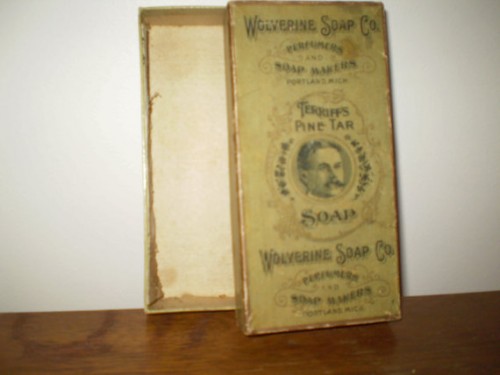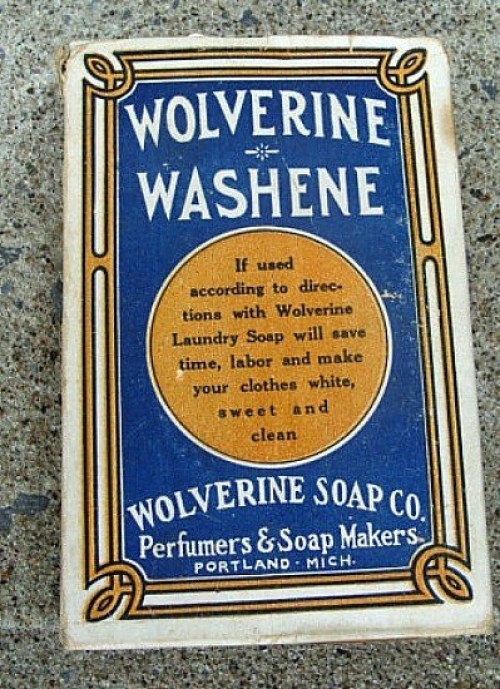Death
12th century reliquary that looks like the Aurora shooter
I was looking through a book of art history when I came across this photo of a reliquary of St. Vitale, made around 1170. A reliquary is a container for holding sacred relics, such as the bones or body parts of saints. This reliquary, made out of bronze with encrusted enamel, held pieces of what were supposed to be St. Vitale's skull. The skull pieces "could be placed in (and removed from) the container through a concealed opening at the rear of the sculpted head." To be honest, I'm not sure which St. Vitale this is supposed to represent, because there are a couple of them.But what really struck me, as soon as I saw the photo, was how much the reliquary, with its creepy staring eyes, resembled James Holmes, the Aurora shooter. Compare for yourself!

Posted By: Alex - Sat Jan 12, 2013 -
Comments (4)
Category: Art, Costumes and Masks, Death
Tombstone for a Trout
Mrs. Keyte of Blockley, Gloucestershire had a pet trout that would eat worms from her hand. When it died in 1855, she erected a tombstone in its honor. That tombstone remains one of the most popular tourist attractions in Blockley. And it's perhaps the only tombstone for a trout in the world. [National Geographic, 1917]

Posted By: Alex - Mon Jan 07, 2013 -
Comments (3)
Category: Death, Obituaries, Pets, Fish, Monuments, Sightseeing, Nineteenth Century
The Gifts of the Magi As An Embalming Kit
Since I attended a church-run high school, I had to sit through plenty of Bible classes as a teenager, but never once in any of those lessons did I hear the theory that the gifts of the Magi (gold, frankincense, and myrrh) were actually meant as an embalming kit. I have no idea if this explanation of the gifts's meaning is widely accepted among scholars, but it struck me as weird, in an interesting way. From SFGate.com:A long-standing tradition, dating back to the ancient Greeks, involved placing one gold coin on each eye of the dead, so that his or her soul would have the boat fare to cross the River Styx, that is, pass from the land of the living into the land of the dead.
Frankincense, the scent found in Catholic and Orthodox churches around the world, is a meditative aid, but is also burned in abundance around bodies before burial to cover any unpleasant odors.
Myrrh was an embalming ointment used until the 15th century to dress bodies before funerals. It is also known as "holy oil," and is still used in traditional Eastern Orthodox burial ceremonies. Myrrh, mixed with wine, also would be offered to Jesus before his crucifixion, as this was an intoxicant, which would have made him less susceptible to pain. The gifts of the Magi at Jesus' birth were all in anticipation of his death...
So, as you open your gifts this Christmas morning, think back to the very first Christmas presents. Aunt Flora's pink-and-brown knit tie may not be quite what you were hoping for, but it's a good deal cheerier than an embalming kit.
Posted By: Alex - Wed Dec 26, 2012 -
Comments (4)
Category: Death, Holidays
The Butterfly Effect
I hope every WU-vie's morning goes better than this.
Posted By: Paul - Wed Dec 19, 2012 -
Comments (6)
Category: Death, Destruction, Disasters, Humor, Science, Cartoons
Julia Pott
Belly from Julia Pott on Vimeo.
Posted By: Paul - Thu Dec 13, 2012 -
Comments (0)
Category: Anthropomorphism, Death, Oceans and Maritime Pursuits, Surrealism
Euthanasia Coaster
Euthanasia Coaster from Julijonas Urbonas on Vimeo.
Posted By: Alex - Sun Nov 18, 2012 -
Comments (9)
Category: Art, Death
Decomposition of a Pig Underwater
Back in Jan 2009, I posted a video showing the decomposition of a pig. Here's a similar video, also showing the decomposition of a pig, but underwater this time. It was an experiment conducted in Feb 2012. The pig was in a cage to stop sharks from getting to it. Watch to the end to see the surprise visitor.
Posted By: Alex - Tue Oct 30, 2012 -
Comments (4)
Category: Death, Science, Experiments
Deer Compost

Posted By: Alex - Wed Oct 24, 2012 -
Comments (9)
Category: Animals, Death
Mouse Takes Photo Of Its Own Death
This photo, with the accompanying caption, ran in papers back in July 1952.
A love of photography and a dislike of mice caused a London photographer to rig this trap that caused a mouse to take his own picture and his life at the same time. The trap was wired to the camera so that tripping of the trap mechanism also tripped the camera shutter. The killing spring is about to come down on the neck of the rodent here as its first nibble at the cheese sprung the trap.
(via eBay)
Posted By: Alex - Sun Sep 30, 2012 -
Comments (5)
Category: Animals, Death, Photography and Photographers
Wolverine Soap



Even before a certain blade-wielding comicbook character pre-empted the name of "Wolverine," could it possibly have been a good idea to name your product after a vicious, pint-sized killer beast?
"Wolverine Soap--it will rip the dirt off your skin, and your skin with it!"
No wonder the pitchman in the ad below is working so hard to find sales reps.


Posted By: Paul - Fri Sep 21, 2012 -
Comments (5)
Category: Animals, Business, Advertising, Products, Death, Destruction, Hygiene, Baths, Showers and Other Cleansing Methods, 1920s

| Who We Are |
|---|
| Alex Boese Alex is the creator and curator of the Museum of Hoaxes. He's also the author of various weird, non-fiction, science-themed books such as Elephants on Acid and Psychedelic Apes. Paul Di Filippo Paul has been paid to put weird ideas into fictional form for over thirty years, in his career as a noted science fiction writer. He has recently begun blogging on many curious topics with three fellow writers at The Inferior 4+1. Contact Us |




